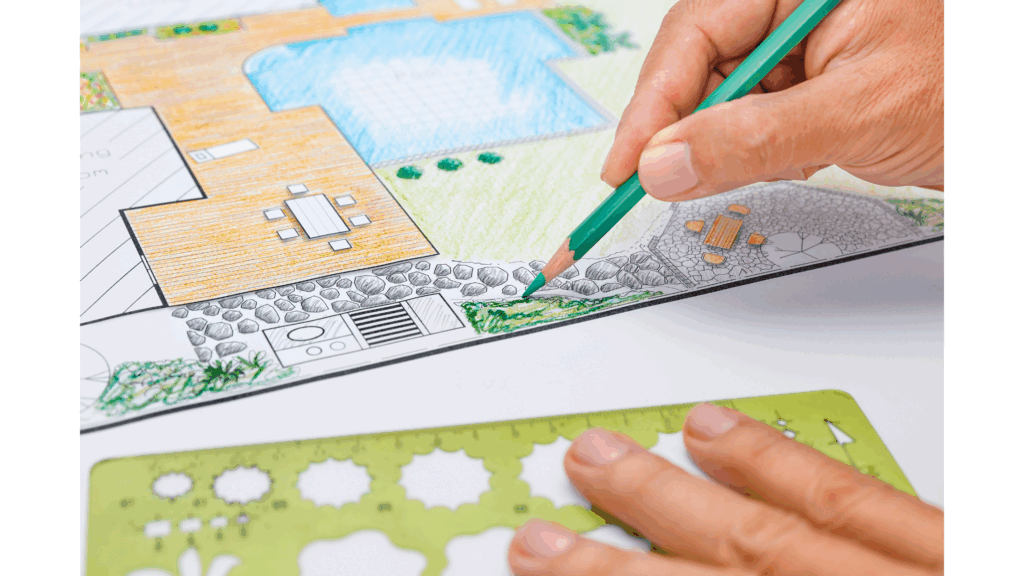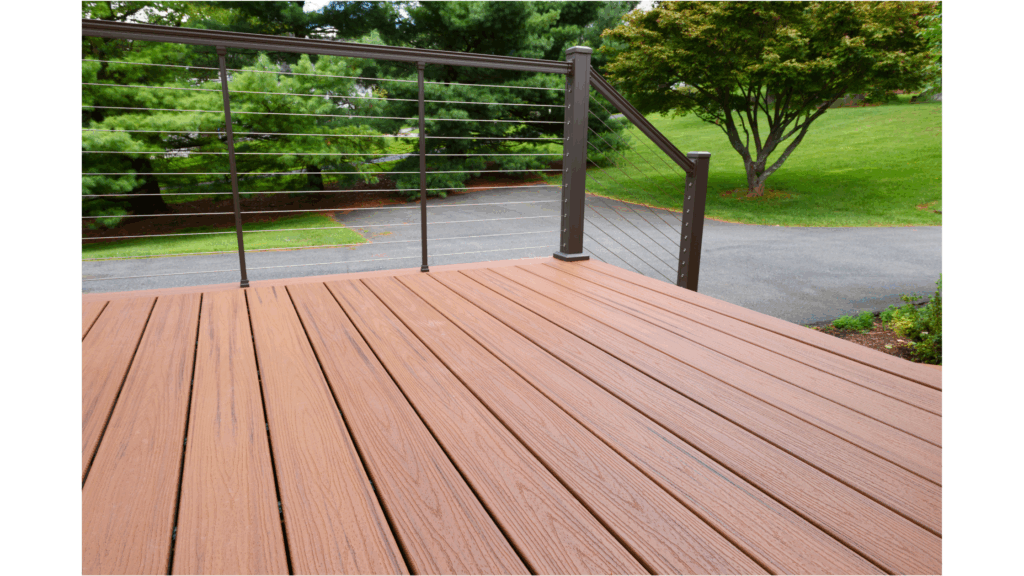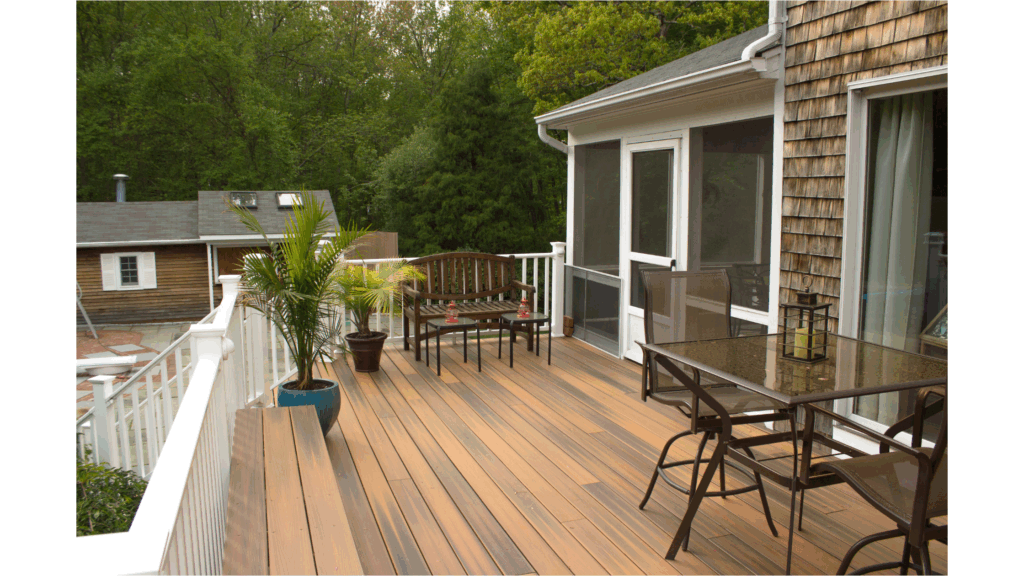
New IRC deck building codes released in 2024 target key structural elements and safety features common in most deck construction projects. Decks are one of the most popular home projects with a higher return on investment than many others.
Decks and accessories are a primary focus of the outdoor living industry. Many new products encourage homeowners to extend their living space outside with full kitchens, entertainment centers, and more. By expanding their habitable space, property owners can enhance their quality of life and increase the resale value of their home simultaneously.
When building or refurbishing a deck, contractors must adhere to the International Residential Code guidelines. Issued every three years, the last update came in 2024. However, many local jurisdictions are just now adopting those from 2021.
To help you make sense of which parts of the IRC code changed in 2024, we’re breaking down the differences between the two. We’ll also explore some of the top decking trends in 2025 to help spark your creativity.
Regulation can seem like a dirty word to some, but for those in the building and construction industry, it’s non-negotiable. Codes developed by international agencies govern every aspect of a project, from layout and grading to stair heights and structural beams. The explosion of social media influencers remodeling with no experience begs the question, why follow codes at all?

Local building codes are the most important for most builders as they define the minimum standards acceptable for building projects. Some contractors go above and beyond the standards, while others try to get by with as little as possible. Both, however, must be within the realm of enforceable guidelines for their locality.
Building inspectors look for code violations to prevent unsafe conditions and the need for expensive repairs. Permanent structures added to a home must be in code for insurance purposes, but that’s not all. A deck built out of code could result in fines, forced removal, and issues with the resale of the property.
Changes in the 2024 edition of the IRC codes highlight a focus on streamlining structure and increasing longevity.
In the 2021 IRC, sizing tables for cantilevered decks required complex calculations to determine the size of beams. This led to potentially oversized beams. The 2024 IRC modifications include combinations of joist spans and cantilevers for equivalent beam loads.
For example, a beam supporting a 10 ft. joist span with a 2.5 ft. cantilever, a 12 ft. span with a 1 ft. cantilever, and a 14 ft. span with no cantilever fall under the same column, streamlining design choices.
The limited guidance on ledger flashing in the 2021 IRC led to inconsistent implementation and potential water intrusion. The 2024 IRC introduced detailed requirements stating that flashing must be installed flush to the weather-resistive barrier (WRB) and extend at least 2 inches above the ledger.
For a remodel where the house sheathing doesn’t have a WRB, one must be installed before flashing integration.
While the 2021 IRC specified decay-resistant material be used in certain deck components, specific species and sapwood content weren’t noted. The 2024 IRC clarifies that all joists, beams, posts, decking, and stair stringers must be made from either pressure-treated wood or from durable species, such as redwood, cedar, black locust, or black walnut. Sapwood can’t make up more than 10% of each face.
The 2021 IRC mandated that exterior stairs have a landing at least as wide as their base, without exception. In 2024, the IRC allows lower-rise decks to have landings of 36 in. for flexibility.
International standards provide a baseline of expectations, but local codes often supersede them in many cases. Local building inspectors and code enforcement officers have discretion based on what version of the code is in effect in their community.
Before beginning any deck-building project, check with the city permitting office or a local building inspector. They’ll help you understand what you’ll need to build a deck within the enforced building codes.
For a detailed look at what you should consider when building a deck, check out our blog!

Other evolutions focus on deck design, prioritizing safety and convenience.
If your deck project is more than 30 inches above grade, guardrails are required. They should span the perimeter of the deck, including the stairs. Furthermore, they should meet weight-bearing and load resistance requirements. Under existing guidelines, they should withstand a force of 200 pounds.
The current code requires that any outlets near the deck be GFCI to prevent accidental electrocution. Other safety requirements include motion-sensing or solar lights to enhance safety and convenience.
To meet the needs of an aging population, accessibility is a key focus. Wider steps, ramps, and ergonomic handrails are being installed more frequently. Kits like the RailFX Oasis™ expansion help retrofit existing railings for that purpose.
While many municipalities are still operating under the 2021 IRC, looking ahead is a good idea. The new codes provide builders with a long-term perspective on what’s to come and encourage them to adopt a higher standard.
For homeowners, the codes mean a new focus on accessibility and aging-in-place practices. These approaches to building enable an older population to remain in their homes longer, allowing them to enjoy their investment.
Grip-Rite outdoor products like DeckForce® exterior and composite screws create strong connections in most decking applications. Designed to stand the test of time, these fasteners feature our PrimeGuard® Nano premium anti-corrosion coating.

Our Grip-Rite Ninja® hidden deck system combines marine-grade stainless steel and other durable components for a seamless finish.
Find out Where to Buy Grip-Rite decking products near you!